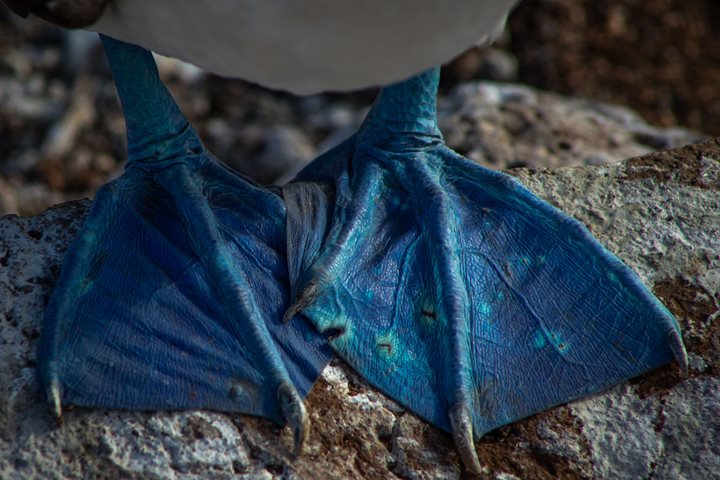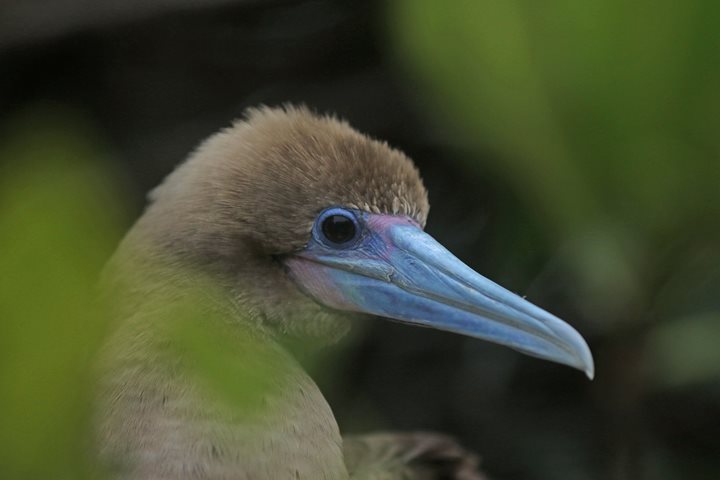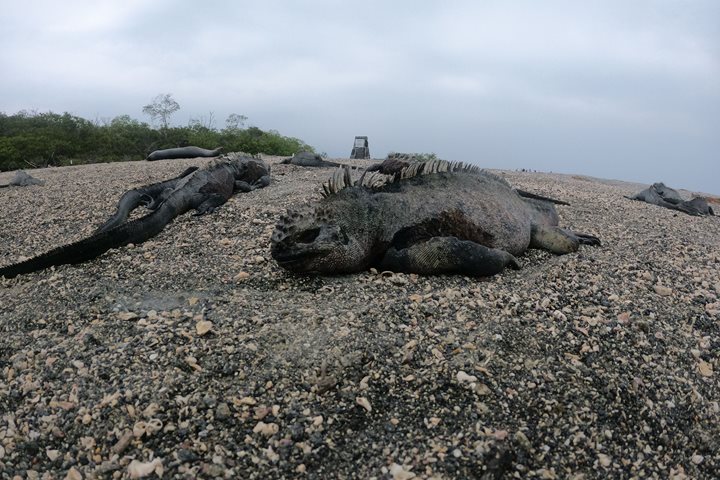This time we anchored off the coast of Santiago Island. The waves were crashing onto the rocky cliffs of Chinese Hat (a parasitic cone off Santiago). With its conical shape and eroded remains of a tuff cone, this island shows the volcanism of the archipelago as a snapshot taken during prehistoric times. The coast was created by a black lava flow created by an eruption from the 1800s. We decided to get ready and deployed our Zodiacs and begin the adventure to explore a pristine area where life on land struggles to establish itself.
We went out on a Zodiac ride observing the large black lava field, a barren landscape that contrasted with the greenery and lush vegetation. We were able to spot a few territorial lava herons, Galápagos hawks, brown pelicans, and Galápagos penguins swimming like torpedoes trying to catch small baitfish. Soon we got in the water to enjoy a terrific snorkeling with all sorts of marine life, from penguins swimming with us, great number of tropical fish, a couple of white-tip reef sharks.
After lunch and a short navigation along Santiago Island and Bainbridge islets where we spotted some greater flamingos, we disembarked A shore landing where your feet will stay dryat Sullivan Bay to explore and imagine how Galápagos was from its beginning, understanding the establishing of successful species in the enchanted archipelago. We observed dramatic formations of Pahoe-hoe or ropy lava, a great number of small cinder cones, and incredibly, along this dry and barren terrain, life has begun to well up—we observed lava cactus and pioneers plants growing on the naked rocks.
We traveled millions of years back in time, to explore the Galápagos Islands through the process of primary succession and the struggling of pioneer species to start a new ecosystem. Lava cacti were some of the first pioneer species on this terrain!
After a beautiful sunset we continued with our exploration!







